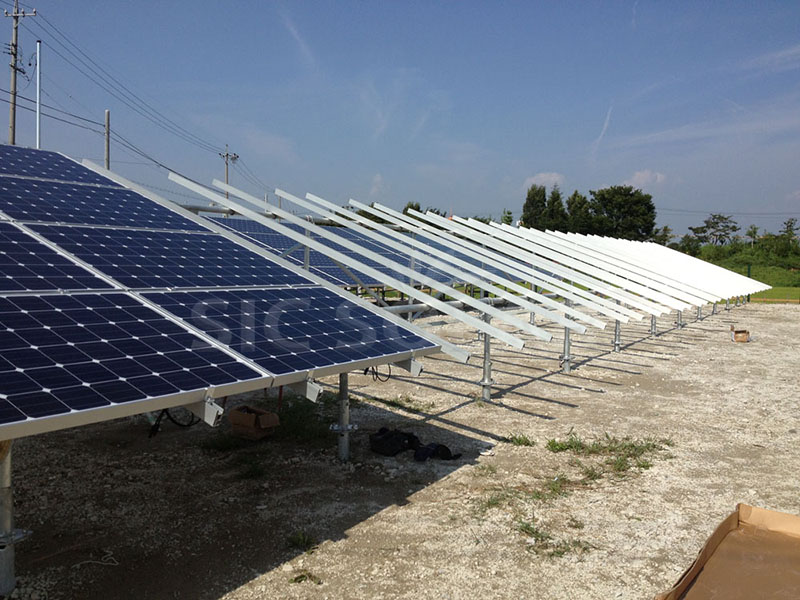Designing an efficient solar panel ground mount system involves a careful balance of engineering principles, site-specific considerations, and cost-effectiveness. Ground mount systems are an excellent choice for maximizing solar energy production when roof space is limited or unsuitable.
Key Elements of Solar Panel Ground Mount Design
1. Site Assessment and Selection
– Sunlight Exposure: Choose a site with maximum sunlight exposure throughout the day, free from shading caused by trees, buildings, or other obstructions.
– Soil and Terrain: Assess soil type and terrain to determine the appropriate foundation. Different soils (rocky, sandy, clay) require different mounting solutions, and sloped terrains may need additional engineering considerations.
– Accessibility: Ensure the site is accessible for installation, maintenance, and potential expansion.
2. System Configuration
– Tilt Angle and Orientation: Design the system to achieve the optimal tilt angle and orientation for maximum sunlight capture. This usually involves angling the panels toward the equator and adjusting the tilt based on the latitude of the location.
– Row Spacing: Calculate appropriate spacing between rows to prevent shading from adjacent rows, especially during low sun angles in winter.
3. Foundation Design
– Fixed Tilt vs. Adjustable Tilt: Decide between a fixed tilt system, which is simpler and cheaper, or an adjustable tilt system, which can be adjusted seasonally for optimal performance.
– Foundation Types: Choose from various foundation options based on soil conditions, such as ground screws, concrete piers, ballast blocks, or driven piles. Ground screws are versatile and environmentally friendly, while concrete piers offer robust support for larger installations.
4. Structural Components
– Material Selection: Use high-quality materials such as galvanized steel or aluminum for the mounting structure to ensure durability and resistance to corrosion.
– Wind and Snow Load Considerations: Design the structure to withstand local wind speeds and snow loads. This may involve reinforcing the structure and using deeper foundations in areas with extreme weather conditions.
5. Electrical Considerations
– Wiring and Conduits: Plan the layout for electrical wiring and conduits to ensure safety, efficiency, and ease of maintenance. Use weather-resistant and UV-protected materials for outdoor installations.
– Grounding and Bonding: Implement proper grounding and bonding techniques to protect the system from electrical faults and ensure safety.
6. Installation and Maintenance
– Ease of Access: Design the system with accessibility in mind for easy maintenance and cleaning of the panels.
– Monitoring Systems: Incorporate monitoring systems to track the performance of the solar array and quickly identify any issues.
Benefits of Ground Mount Solar Systems
– Flexibility: Can be installed on various terrains and adapted to site-specific conditions.
– Scalability: Easily expandable to accommodate increasing energy needs.
– Efficiency: Often more efficient than rooftop systems due to better cooling and optimal positioning.
Partnering with SIC Solar
For a successful ground mount solar project, partnering with an experienced and reliable provider is crucial. SIC Solar offers a comprehensive range of ground mount solar racking systems designed to meet diverse project needs. With SIC Solar’s expertise, you can ensure a high-quality, durable, and efficient solar installation.
Conclusion
Designing an effective solar panel ground mount system involves meticulous planning and consideration of site conditions, structural integrity, and electrical safety. By focusing on these key elements, you can maximize energy production and ensure the longevity of your solar installation. Partnering with SIC Solar can enhance your project’s success, providing top-tier mounting solutions tailored to your specific requirements, and paving the way for a sustainable and energy-efficient future.
